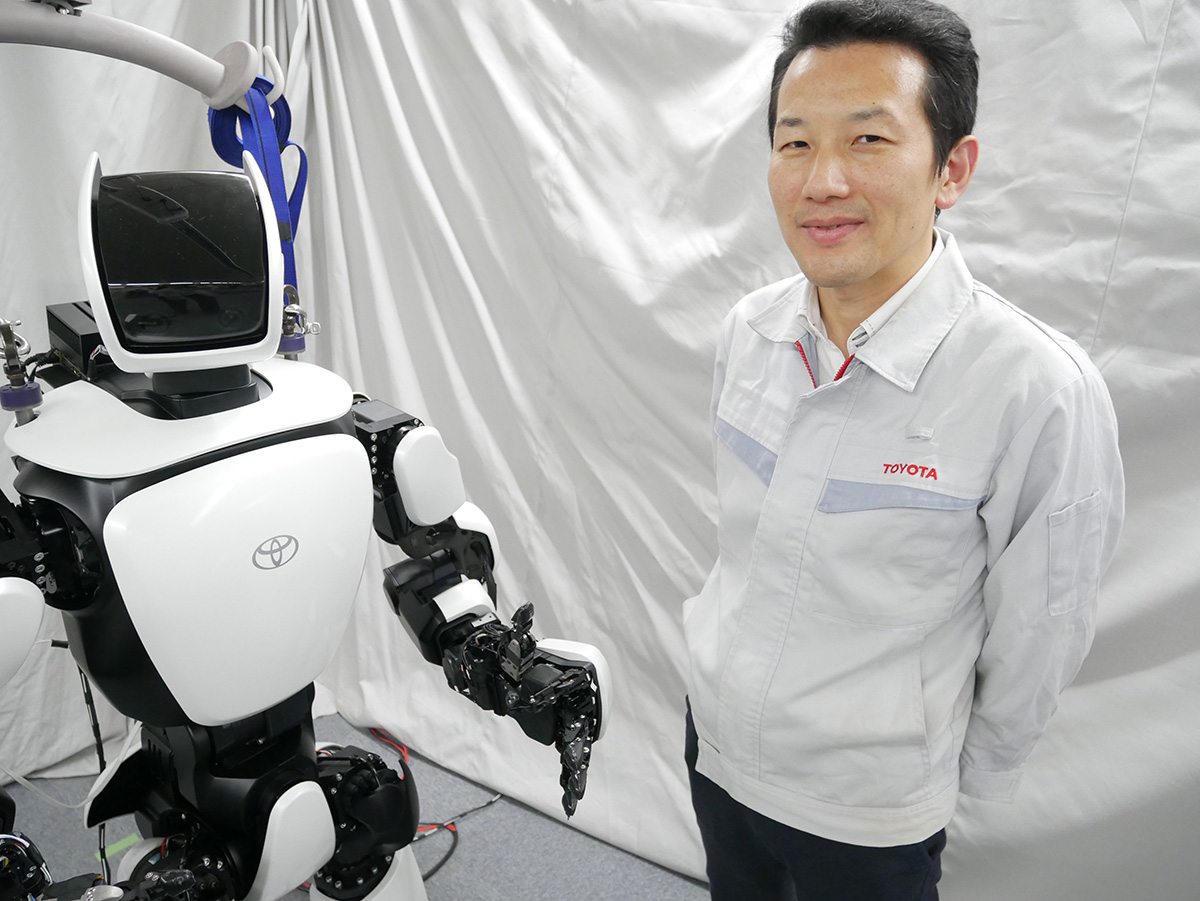
Why is Toyota developing humanoid robot?
Yoshida
Ok, I understand how you have updated T-HR3. But can you help people understand why you start developing humanoid robots in the first place?
Moridaira
When we consider how robots will be used in the future, we think that there will be high demand for robots that make effective use of joints, the way humans do, and that can operate safely even when they are in contact with the world around them.
In that kind of scenario, it is vital that these robots possess redundant degrees of freedom. It goes without saying that we faced numerous development challenges, but we believed these technologies would be necessary, and so we launched the development of humanoid robots as a typical type of shape.
Yoshida
I’m sorry, what does “redundant degrees of freedom” mean?
Moridaira
It’s a functional capability that gives a robot flexibility so that it can keep working on problems without having to suspend operations. So, for example, a robot arm that has many joints can continue to work even if a few of the joints stop working for some reason.
In addition to making up for any weaknesses, having redundant degrees of freedom allows for greater diversity in how the robot can move, including allowing it to scoop up from under an object or to take it from the side. It’s interesting to see the difference in how the robot moves depending on user personality and skills.
Yoshida
I assumed it was like a back-up in case of an emergency. I understand what you mean by redundant degrees of freedom and why it is important, but why does the robot need to be humanoid shape in the first place?
Moridaira
It is often said that a humanoid shape is useful because the robot can use the same tools and environment as a human, but one more big reason is that humans find it to be easiest to control robots that are humanoid in form. For proof, consider that you tried the Master Maneuvering System for first time just now and you could control it without any special training.
